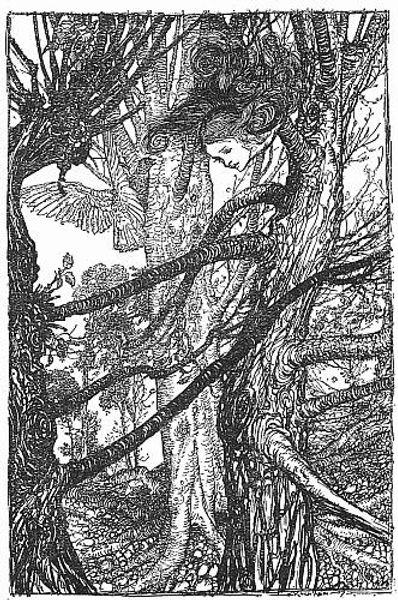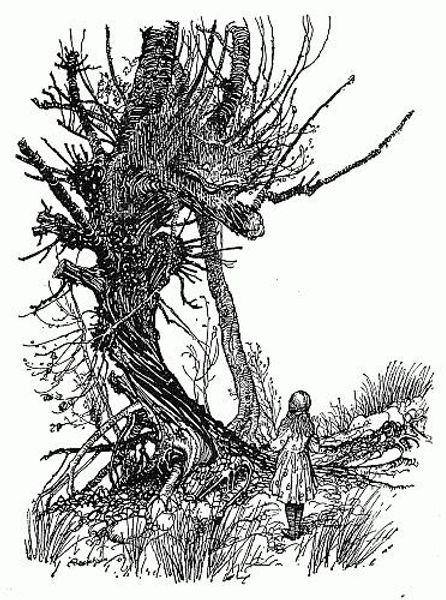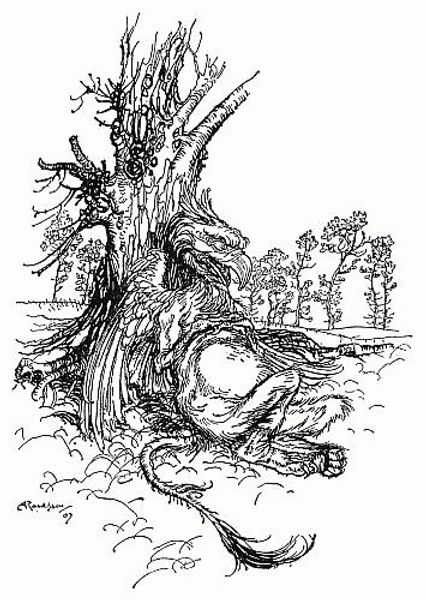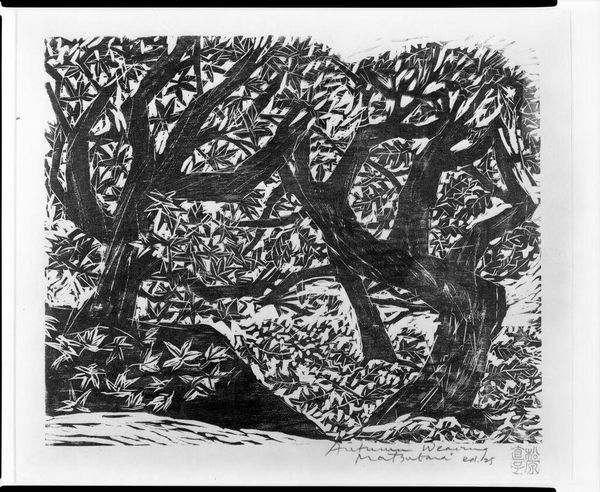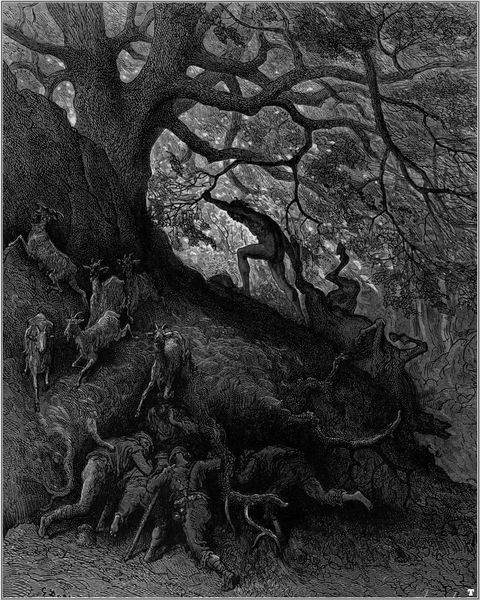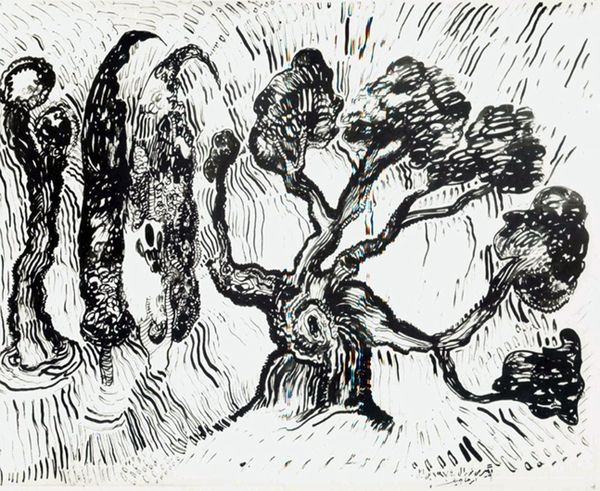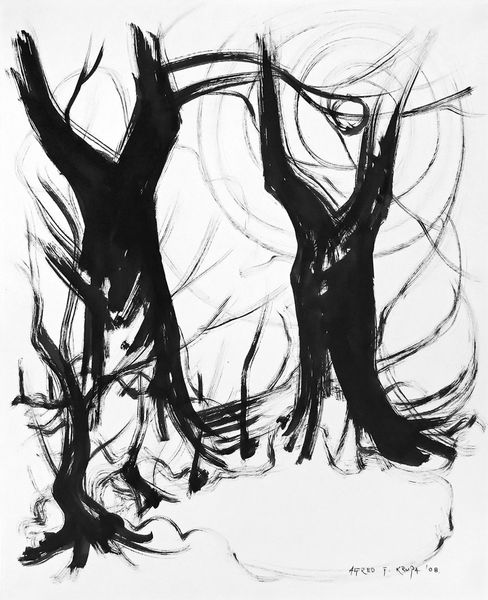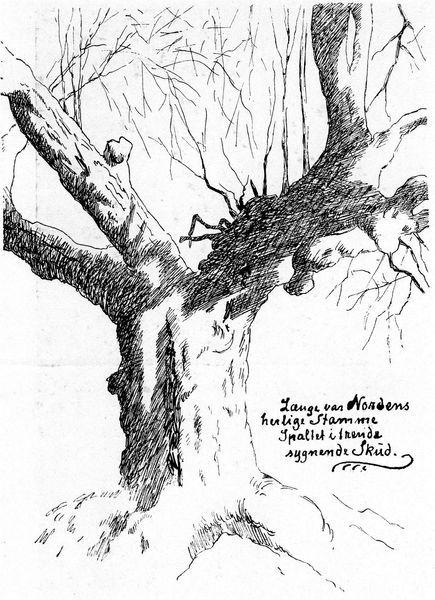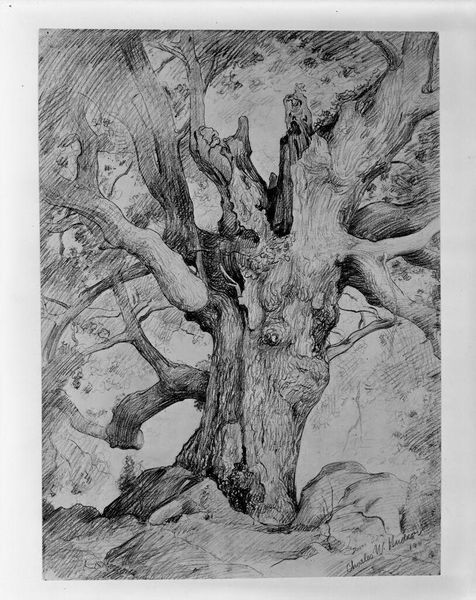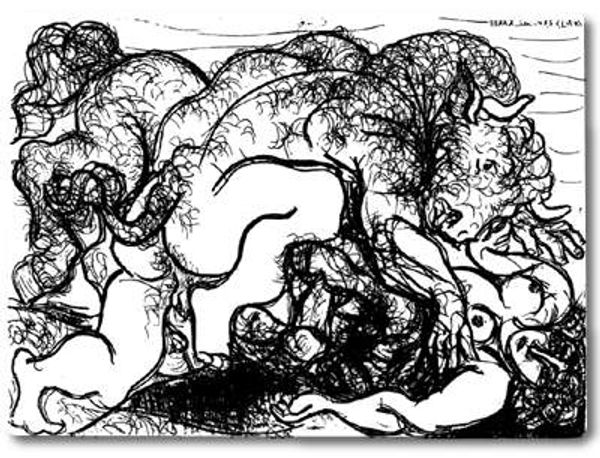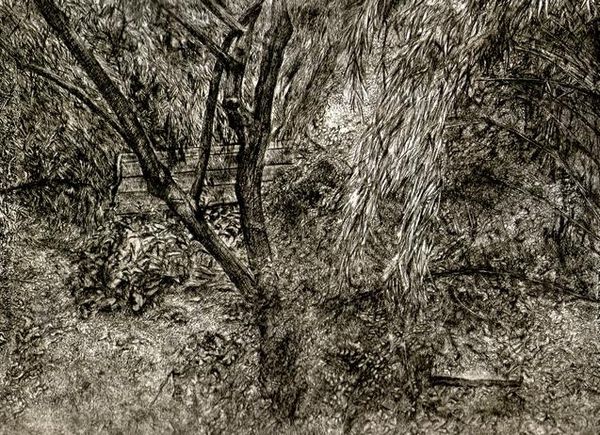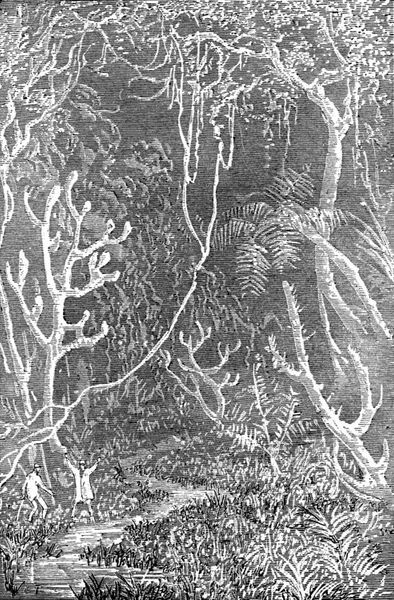
drawing, print, relief-print, woodcut
#
drawing
#
line-art
# print
#
relief-print
#
landscape
#
woodcut
#
line
#
monochrome
Copyright: Georgyi Yakutovytch,Fair Use
Editor: So, here we have Georgyi Yakutovytch’s untitled woodcut print. It’s a black and white landscape, almost overwhelmingly dense. It looks like a forest, teeming with details rendered through incredibly precise lines. What strikes me most is the labor involved. What are your initial thoughts looking at this? Curator: Well, considering the laborious process of woodcut—carving away at the block to create the image—we have to recognize the physical act embedded within this piece. Notice how the white space isn't just negative space, but something actively created, even violently removed, through a deliberate process. What kind of social structures allow for this labor? What rituals are observed? Editor: I never thought about the white space as an active choice before. Given that Yakutovytch worked in the Soviet Union, how would that context inform the means of production? Was wood readily available? Curator: Precisely! Think about access to materials, the workshop environment. Was this individual or collective labour? How might Soviet-era ideals surrounding labor impact Yakutovytch's artistic choices, specifically regarding the intense detail and almost obsessive mark-making? How accessible was this print and who was it for? Editor: It’s like the artist is making visible the unseen labor embedded in the landscape itself – felling the trees, shaping the wood... Do you think the monochrome choice affects its accessibility or intended message? Curator: Absolutely. Consider the economic factors: colour printing requires more resources. A stark monochrome focuses our attention on the act of carving, the materiality of the wood, and potentially broadens distribution to be more democratic or controlled by governmental influence, if prints served didactic means. This act itself could have served multiple purposes in his social structure. Editor: I see the picture not just as a record of the scene, but as a result of this labor; a very specific time, process, and cultural context that affected every single line of this image. Curator: Exactly! It allows us to understand the value in materials. That, perhaps, elevates this artwork to one that gives precedence to those who laboured.
Comments
No comments
Be the first to comment and join the conversation on the ultimate creative platform.
